When your child brings home a long-term project, it’s natural to feel torn. On one hand, you want to help them succeed. On the other, you’re not sure how much is too much. Should you guide the research? Suggest design ideas? Stay hands-off entirely? For many parents, the line between supportive encouragement and unwanted interference can feel blurry, especially when the clock is ticking.
Project-based learning (PBL) isn’t simply a modern twist on homework. It’s a powerful, student-driven approach that encourages real-world problem solving, creativity, and ownership. But it works best when students take the lead. This article offers five practical, research-informed tips to help you support your child’s learning process, without taking over the project. From asking the right kinds of questions to creating an environment for focused work, these strategies help you be present and helpful, while still leaving the learning firmly in your child’s hands.
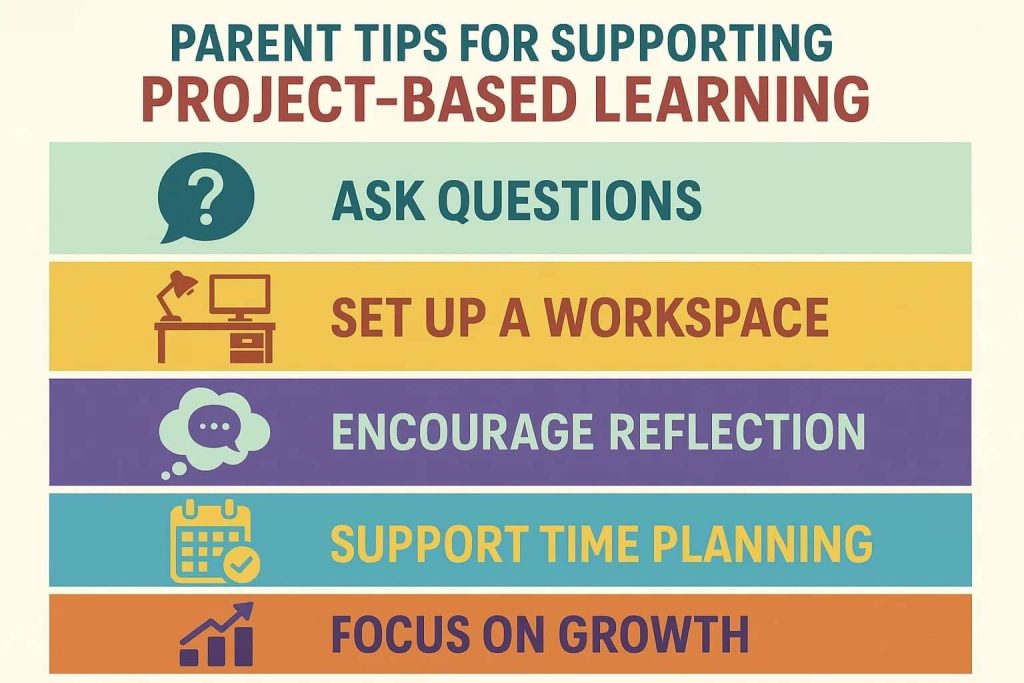
This study sheds light on the critical need for policymakers, educators, and caregivers to explore alternative disciplinary methods that promote healthy development without resorting to physical punishment.
For more information and insights from the research, visit the full article on NYU’s website: Spanking and Other Physical Discipline Lead to Exclusively Negative Outcomes for Children in Low- and Middle-income Countries.
Tip 1: Focus on Questions, Not Answers
One of the most effective ways to support project-based learning is to ask thoughtful questions that nudge reflection without handing over solutions. When a student feels stuck or unsure, many parents instinctively want to provide suggestions. But in a PBL environment, which improves student engagement by enabling knowledge and information sharing, the learning happens through struggle, iteration, and discovery.

Instead of saying, “Why don’t you try this?”, try asking:
- “What have you considered so far?”
- “What do you think your audience might want to know?”
- “Which part feels most challenging right now?”
These open-ended prompts invite students to think critically about their process and decisions. They also reinforce a growth mindset, reminding students that it’s okay not to have the answer straight away, and that persistence is part of meaningful learning.
Tip 2: Create a Home Environment That Supports Independence
Students working on long-term projects need space, both physical and mental, to develop their ideas. While schools often provide structured settings for this, the home can play a key role too.

Make room for their process
Whether it’s a corner of the dining table or a dedicated tray they can return to, having a consistent workspace helps students maintain momentum. This doesn’t need to be elaborate. What matters is that it’s theirs; a place where drafts, sketches, or models can be left out without being tidied away each night.
Respect their timeline (even if it looks messy)
It’s tempting to step in if it seems like your child is procrastinating or taking the ‘wrong’ approach. But project-based learning thrives on iteration. There might be quiet periods followed by sudden bursts of progress. Letting them own that rhythm, while offering encouragement, builds self-management skills that go beyond the classroom.
For example, rather than saying, “You should work on this tonight,” try, “What’s your plan for moving forward this week?” This slight shift places the responsibility back with the student while still showing that you’re paying attention.
Tip 3: Ask Questions That Spark Reflection, Not Solutions
Supporting a project doesn’t mean providing the answers. In fact, the most valuable thing parents can do is prompt reflection and deeper thinking, without steering the direction of the work.
Use open-ended prompts
Rather than asking yes/no questions or suggesting fixes, try phrases like:
- “What are you most proud of so far?”
- “What part are you finding most challenging?”
- “How will you know when it’s finished?”
These encourage children to evaluate their progress, consider next steps, and build metacognitive awareness, which is an essential part of project-based learning.
Be a sounding board, not a co-author
Let your child talk through their ideas, even if they’re still half-formed. Sometimes just hearing themselves explain a concept aloud helps clarify their thinking. You don’t need to weigh in with advice unless asked. Often, your presence and active listening are enough.
Tip 4: Help Manage Time Without Micromanaging
One of the biggest hurdles in project-based learning isn’t the content, it’s the calendar. For many students, pacing a long-term task is a skill that develops over time, and this is where parents can offer meaningful, non-intrusive support.
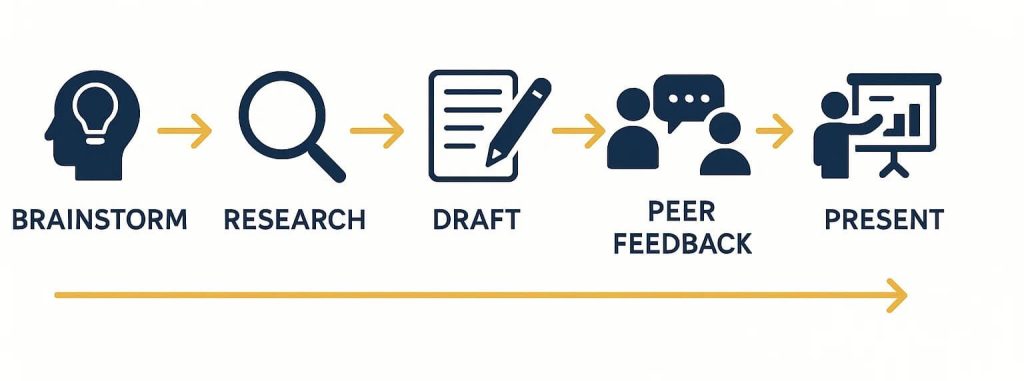
Encourage small milestones
Break the project into bite-sized checkpoints. Rather than focusing on the final product, help your child map out short-term goals, such as:
- Research completed by Tuesday
- First draft or sketch by Friday
- Peer feedback over the weekend
This gives structure without pressure and builds valuable habits like planning ahead and revisiting work with fresh eyes.
Use gentle prompts to build ownership
Instead of hovering over deadlines, try asking:
- “What’s your next step today?”
- “How’s your timeline going?”
- “Would it help to write a mini checklist for the week?”
These prompts keep your child in the driver’s seat while reminding them that time management is part of the learning process.
Parents don’t need to supervise every hour. Providing a quiet space, offering a calendar or visual tracker, and checking in briefly every few days can make a real difference without taking control.
Tip 5: Focus on the Process, Not Just the Outcome
When a project finally comes together, it’s tempting to zero in on the finished product, especially if it looks impressive. But the real learning lies in how students got there, not just what they created.
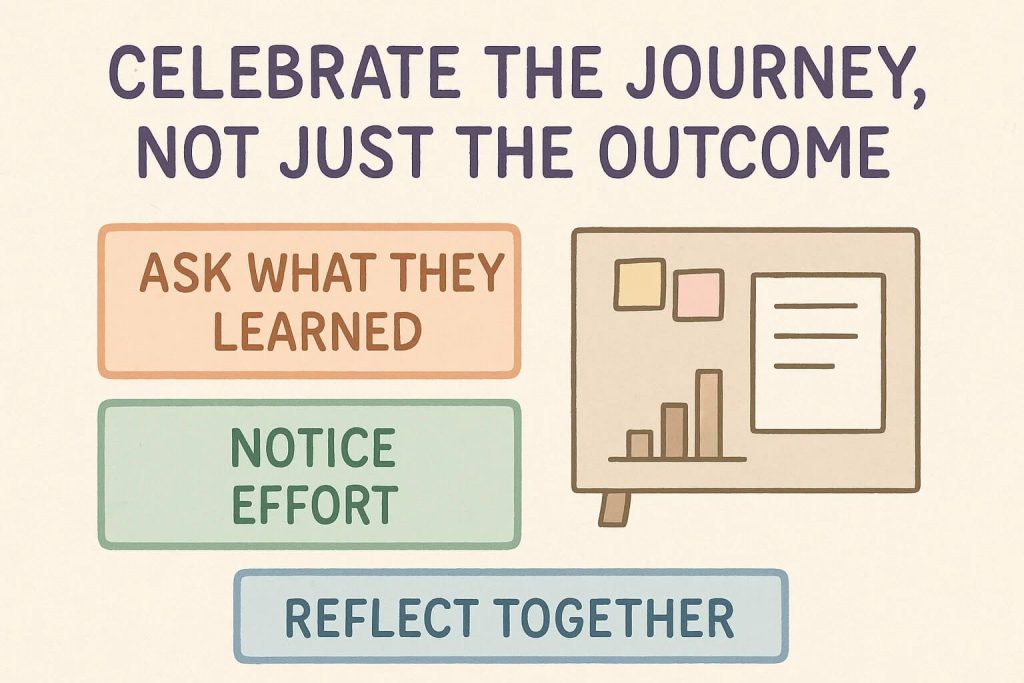
Celebrate effort and reflection
Instead of asking “What grade did you get?”, try:
- “What part of the project are you most proud of?”
- “What would you do differently next time?”
- “What surprised you during this process?”
These kinds of conversations build metacognition, the ability to think about one’s own thinking, which is a powerful outcome of project-based learning.
Shift the spotlight to student growth
Even if the final result isn’t polished, highlight the progress your child has made:
- Did they collaborate more confidently this time?
- Was their research more organised?
- Have they become better at managing feedback?
When parents model curiosity about the journey, students learn to value their own development over perfection. That mindset can carry over into every future learning experience.
Supporting Without Taking Over
Project-based learning offers students the chance to think deeply, solve real problems, and take ownership of their work; skills that matter well beyond the classroom. As a parent, your support plays an important role, not by stepping in to finish the task, but by helping to shape a home environment that nurtures curiosity, resilience, and independence.
By asking open questions, encouraging time management, offering emotional support, and focusing on the learning journey over the final result, you help reinforce the very skills project-based learning is designed to build. A little guidance goes a long way, especially when it comes with trust and encouragement.
For more insights on how to support student learning at home, visit AISL Mall.
Curriculum and Guides that may be of interest:
Get a special discount by quoting code AISLMALL during CHECKOUT.
3Education: StoryTellAR
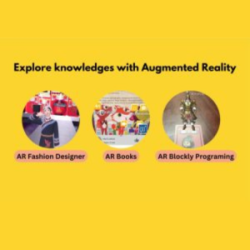
StoryTellAR is an online and remote platform designed specifically to connect offline materials seamlessly with interactive digital content, using Computer Vision (Augmented Reality). With a user-friendly user interface, curators can use their mobile phone to associate audio recordings, videos and other digital interactions such as audio, AR video plane and URL to any artworks. The corresponding digital content customized by their very own creators will pop up, making the book seamless, personalized and effective.
AlGreen: E-book

AlGreen is at the forefront of developing microalgae technology for air purification and carbon capture, driving a sustainable future. AlGreen’s ebook introduces young learners to biology’s wonders and its role in sustainability. Covering cellular and plant biology, climate science, and future biotech like carbon capture and renewable energy, it inspires environmental stewardship and a passion for protecting our planet.
Chinese 1-2-Tree: Leveled Reading Platform For Pre-k To Grade 8
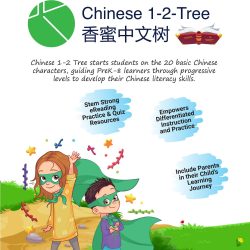
Chinese 1-2-Tree is a unique leveled reading interactive learning platform designed to provide progressive leveled reading starting with 20 basic characters. Chinese 1-2-Tree offers literacy essentials for every PreK-8 Chinese classroom. We offer a complete solution for reading instruction and student practice, perfect for use in class and at home. Rely on our easy-to-use resources to build foundational skills and strengthen reading comprehension.
Codementum: Gamified Coding Training Platform and Coding Curriculum
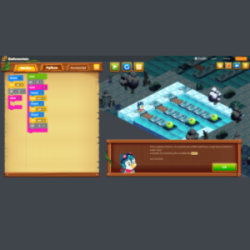
Codementum offers a fun, interactive platform to teach kids coding through block-based and text-based languages like Python and JavaScript. Kids learn to create mobile games, apps, and AI projects at their own pace, with gamified courses, self-guided challenges, and resources for all experience levels.
NovaAcademy: Ready-to-Go Curriculum Sets
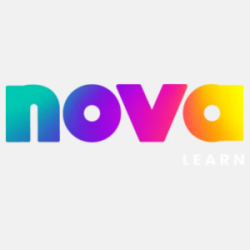
Novalearn Limited is an EdTech company transforming education by seamlessly integrating machine learning, studio-produced edutainment, and quality STEAM education aligned with international K-12 curricula. All the teaching resources you need for fun and enriching classes, created by the NovaLearn team of experienced educators and industry experts. Each curriculum set includes Project lesson plans, Engaging videos, Interactive activity sheets and Skill-building exercises
Oxford University Press Cambridge IGCSE/O Level/AS & A Level Exam Success Revision Guides
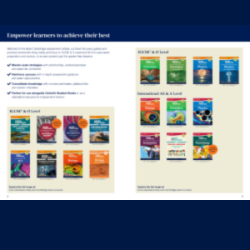
Oxford University Press is a department of the University of Oxford. It furthers the University’s objective of excellence in research, scholarship, and education by publishing worldwide. Cambridge Exam Success Guides from Oxford University Press provide unique exam support and revision guidance for Cambridge IGCSE & O Level and AS & A Level students. Matched to the latest Cambridge assessment criteria. Perfect for use alongside Oxford Resources for Cambridge Student Books or as a standalone resource for independent revision.
SAM Labs: STEAM Pathway Schoolwide Annual Subscription
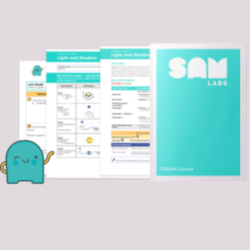
SAM Labs, an award-winning EdTech company, empowers over 9,000 schools in 60+ countries with innovative Coding and STEAM tools. Students create projects like smart city lighting and solar habitats while meeting curriculum standards, inspiring problem-solving and fostering teacher creativity.









